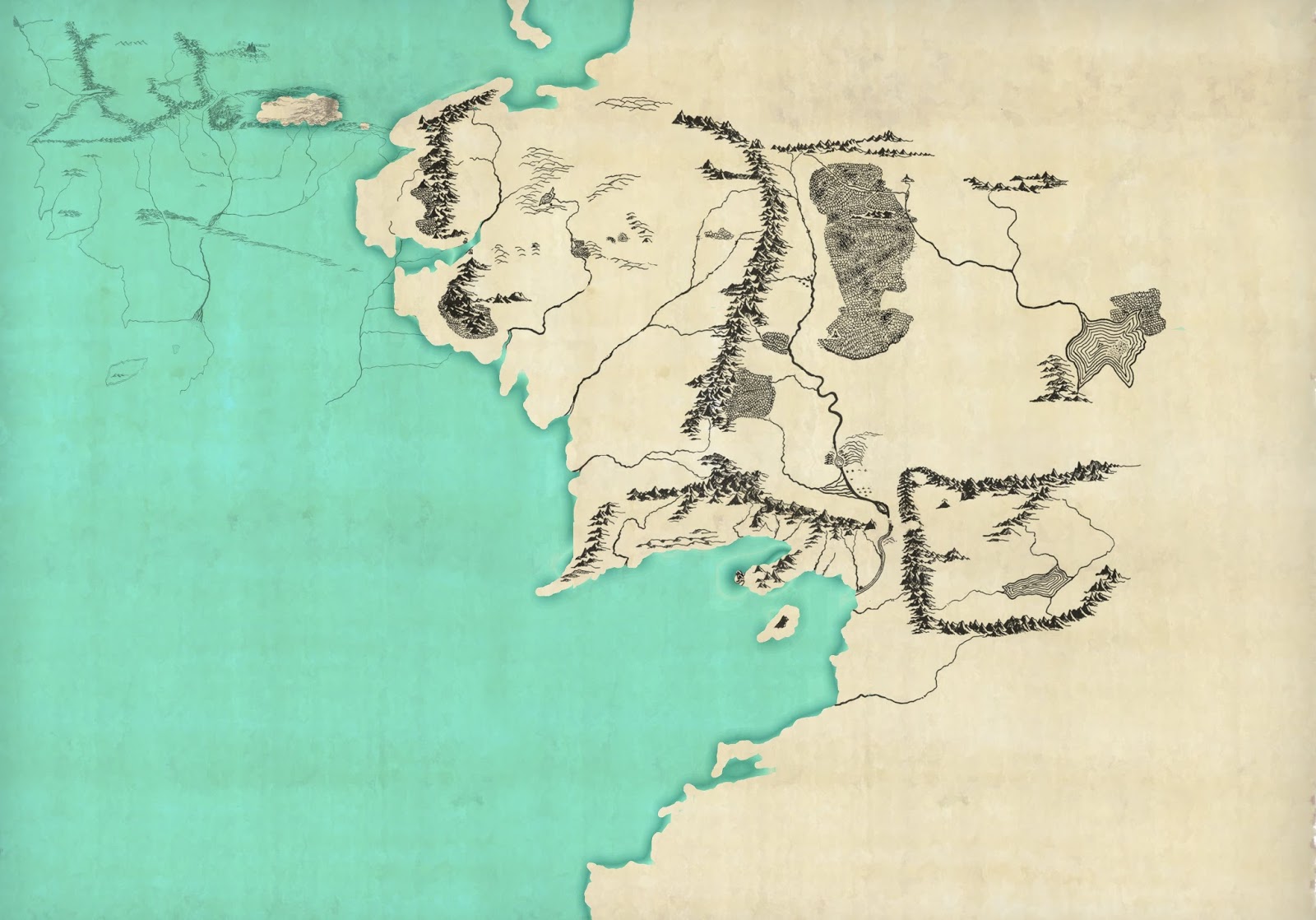

Unfortunately, if you use a print that is from an inkjet printer, there is a great probability that while it is soaking in the tea the ink would run. Side tangent: Smaller projects that require aging can use this same process but you need to ensure that you have a laser printed image. If you had a massive oven you could bake it at a low heat but I don't have an oven that has a 3'x4' shelf. I left the map in the bathroom with the fans on for most of the day and let it air dry. It worked fairly well and I'm pretty happy with the result. The thought for this was that the ripped fibers in exposed edges in the paper would absorb the extra tea and would cause darkening of the edges. I then took the teabags out of the bath and dabbed them along all the edges and along the rips. As the map was drying on the floor of my bathroom, I rubbed two additional holes in the map and made some small rips in the map as well. I placed the map on two trash bags that I had opened up and lain on the floor to keep as much of the tea in the map and not on the floor. The only edge that I didn't rip was the one in the middle of the roll but once I pulled the map out of the bath, I unrolled it and rubbed the edge to create the ripped look. I also rubbed all along the edges to create the ripped edges.

As I was pushing the map down, I made some minor rips in the map and thus added to some of the aged looking characteristics of the map. I made sure to push down on the map every couple minutes to ensure that the center bit would get some tea in it since it kept seeming to rise in the center. After steeping for that long, I took my map and placed it, rolled up, into the bath and let it sit there in the tea bath for 15 minutes. Once I had my print, I brewed a hot bath and threw in six (6) black tea bags and let it steep for about 10 mins. I added a slight white text border to make it easier to read the text from the black background images. I also made the image strictly black and white because the lettering was initially red and since I wanted a B&W print, I made it all black. I opened the downloaded vector image in Photoshop, sized it to 36" tall by 48" wide with 180dpi because I thought it'd be easier for the people working at Staples to just open the file and hit print rather than having to resize it there. The color prints are very expensive but if you want a black and white image, you can get what they call an engineering print for pretty cheap and its a laser print (which is also beneficial for the aging process which I'll go into later). While the file was downloading I did a little research and I found out that Staples offers printing in massive sizes in color and black and white. They have a vector image of the entire map in three different formats to choose from and did I mention ITS FREE! So, I downloaded the files and began to research printing options (which, in hindsight, I should have done first but it worked out well.)

I came across this website and nearly pooped my pants. A vector image has it's data stored in mathematical equations so that it can be re-sized to massive sizes and still have very crisp edges. However, I didn't think that they would make a good large scale map because I know that images that have been rasterized (like jpg images) don't scale up well and since I knew how large I wanted my map, I knew that I'd need a vector image. I came across some cool websites like which has a very cool interactive online map that shows various character's movements from the books and other websites that have great high resolution images. I searched online for an image that I thought would make a good map.


 0 kommentar(er)
0 kommentar(er)
